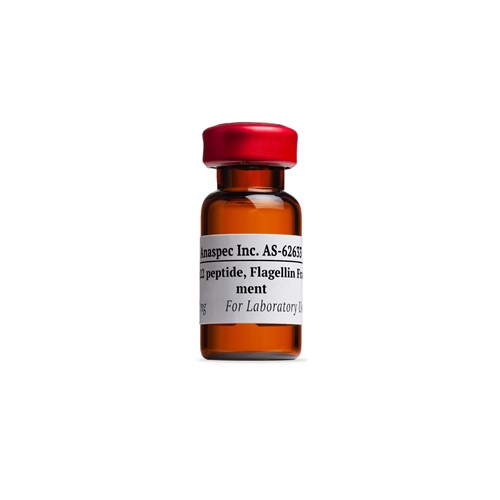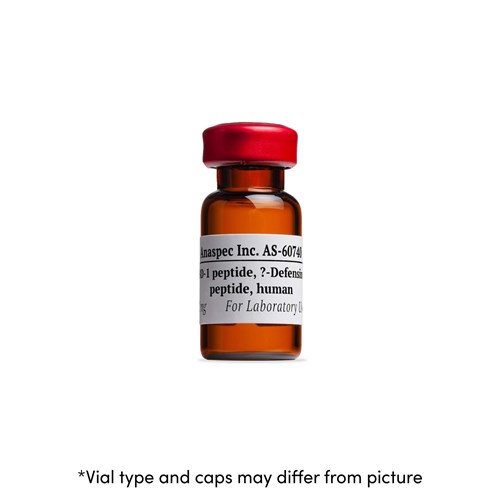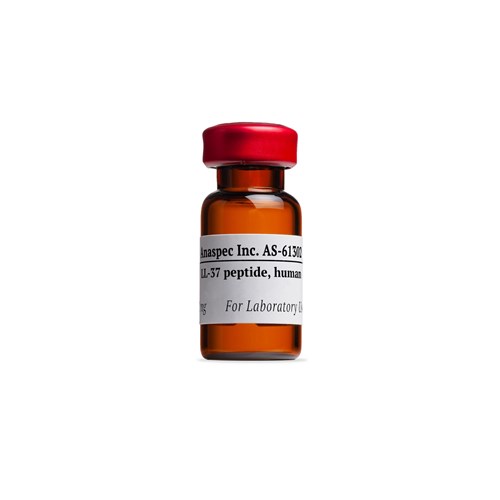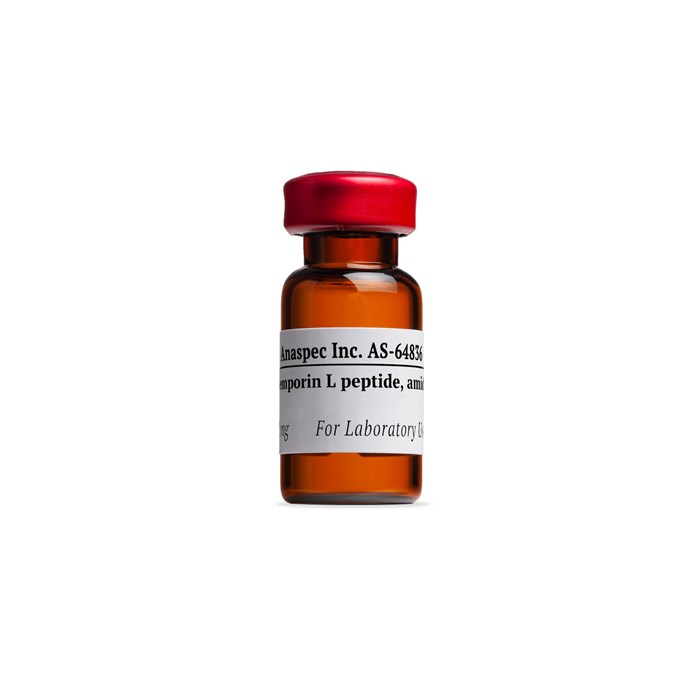Temporin L, amide - 1 mg
- Cat.Number : AS-64836
- Manufacturer Ref. :
-
Availability :
In stock
Temporin L is a hydrophobic peptide amide derived from the frog Rana temporaria. This peptide penetrates the hydrophobic core of the cell membrane to penetrate and disrupt the lipid bilayer. Temporin L enhances Temporin A and Temporin B activity by preventing their oligomerization to Lipopolysaccharide (LPS), allowing them to bypass LPS and access the cytoplasmic membrane. This peptide is active against Gram-positive and Gram-negative bacteria, including B. megaterium and E. coli.
Specifications
| Chemistry | |
| Sequence one letter code |
|
|---|---|
| Sequence three letter code |
|
| Molecular Formula |
|
| Molecular Mass/ Weight |
|
| Modification | |
| Conjugation |
|
| Quantity & Purity | |
| Purity |
|
| Storage & stability | |
| Form |
|
| Storage Conditions |
|
| Activity | |
| Biomarker Target | |
| Research Area | |
| Sub-category Research Area | |
| Usage |
|
| Source | |
| Source / Species |
|
You may also be interested in the following product(s)



References
A Synergism between Temporins toward Gram-negative Bacteria Overcomes Resistance Imposed by the Lipopolysaccharide Protective Layer
J Biol Chem . 2006 Sep 01 ; 281(39) 28565 | DOI : https://doi.org/10.1074/jbc.M606031200
- Y. Rosenfeld
- et al
Binding of the Antimicrobial Peptide Temporin L to Liposomes Assessed by Trp Fluorescence
J Biol Chem . 2002 Jul 01 ; 277(28) 25170 | DOI : https://doi.org/10.1074/jbc.M203186200
- H. Zhao
- et al
Temporins, Antimicrobial Peptides from the European Red Frog Rana temporaria
Eur J Biochem . 1996 Dec 01 ; 242(3) 788 | DOI : https://doi.org/10.1111/j.1432-1033.1996.0788r.x
- M. Simmaco
- et al

